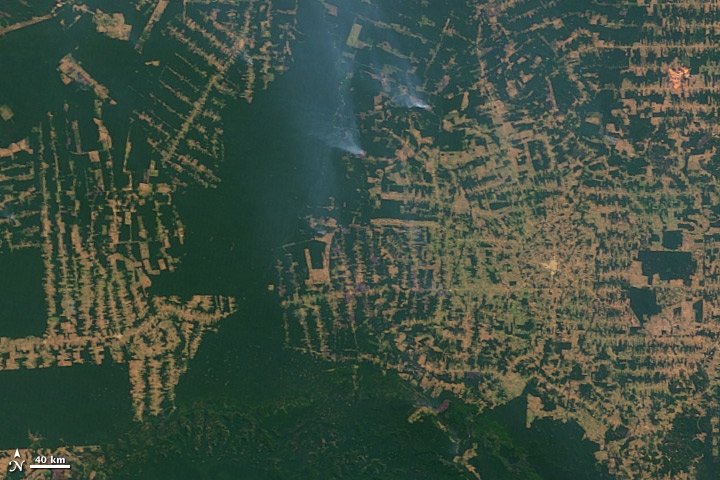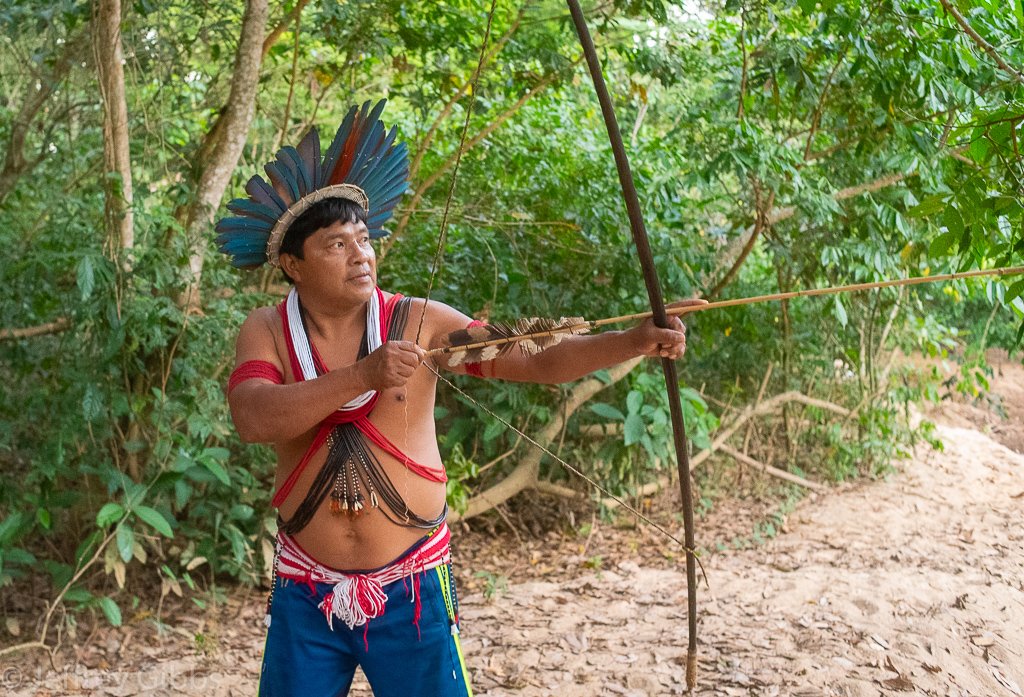I want to share a story of an extraordinary encounter with an elderly indigenous woman that I had on my recent visit to the Amazon rainforest.
The Paiter indigenous people live in the Brazilian state of Rondônia, located in the southern Amazon. I’ve known of Rondônia for a long time because it’s infamous for its deforestation. In the late 1960s, the then military dictatorship in Brazil pushed a road several hundred kilometers through the pristine forest of Rondônia and encouraged farm labourers from southern Brazil to go there to obtain free land. The military dictatorship’s goal was not to help the landless farm labourers but rather to use them as the blunt tool to open up the Amazon to development — an objective that to this day is of strategic importance to the generals. The military dictatorship’s publicity campaign for Rondônia in those days was “a land without people for people without land”.
Of course indigenous people, including the Paiter, already occupied the land. But the military did not trust their allegiance to Brazil because they did not speak Portuguese, so they were not granted any rights or respect. The first contact the Paiter had with modern Brazilian society did not happen until 1969 when the road was upon them. It was a cataclysmic event. Thousands of migrants arrived and started to deforest the land to grow cattle. Introduced diseases and violence killed most Paiter within a few years. From many thousands, only 250 survived. It’s a pattern of catastrophe visited upon indigenous peoples worldwide. The Paiter have now rebuilt their society somewhat to about 1,900. Rondônia now has the distinction of being one of the most deforested regions of the Amazon.
I was invited to visit two Paiter indigenous communities by Gasodá Surui, the coordinator of their cultural centre. We were walking through his village of Aldera Paiter one morning and he was pointing out sights he thought might be of interest to me (schools, health clinics, food gardens, etc). Luckily, there were two Brazilian visitors there who happened to speak English, as Gasodá does not and I do not know Portuguese. As we walked through the village, out of the corner of my eye I spotted an old woman inside a small thatched hut. I felt a strong pull to her. We were walking away from her but I informed Gasodá that there was an old woman in that hut that I felt I needed to meet. I asked him if he could ask her if it was okay for me to speak with her. He smiled and informed me that the old woman was his mother.
Maganogan Surui
Her name is Maganogan Surui. She is 76 years old, which means that the first 23 years of her life were before contact. She is one of the 250 Paiter who survived the great disaster of 1969. Her life before contact is a state of existence that is really impossible for me to fathom. All her cultural reference points would have been completely different to mine — her worldview, spirituality, diet, lifestyle, cultural norms, aspirations, etc. I would learn later that Maganogan is considered a very spiritually strong person among the Paiter.
I knelt down at the small door and peered inside Maganogan’s hut to see her sitting in a hammock. The first thing I noticed was that she had a traditional tattoo across her face. I then saw that she was weaving something with her hands. Gasodá introduced me and told her about my goal of helping to bring international support to help save the Amazon rainforest. She nodded and just looked at me with her peaceful eyes. I asked her what her life was like in those 23 years before contact. She only speaks Paiter so our conversation was translated in two steps (Paiter to Portuguese by Gasodá and then Portuguese to English by the two Brazilian visitors, and vice versa). She told me that during that period of her life she was being trained by her mother to make clothing for her people. The “clothing” consisted of long layered necklaces that draped across the Paiter’s bodies. The string was made from natural fibers and the beads made from seeds and wood. As she told me this, I noticed that she was making a clothing necklace using the same technique and materials her mother had taught her. Astonishing!
Jeffrey pictured with Ethel Jones (left) and Ada Yovanovich
I told her about my time as a teenager when I created a youth organization to help protect the ancient forests of Haida Gwaii. Maganogan seemed interested in this. As I told her about the Haida indigenous people and their stand to protect the forest, her interest only increased. I felt compelled to tell her that as a teenager there were two elderly Haida women (Ada Yovanovich and Ethel Jones) who were important to me and have since passed on. They were esteemed members of their community and had been leaders in protecting the forests. I told Maganogan that meeting her made me think of them. She nodded. I told her that Ada and Ethel had given me the Haida name Kuuyaa, meaning precious. Maganogan smiled and leaned in to speak. She told me that those Haida women are watching over me and giving me strength for my mission to help protect the Amazon. I was moved and thanked her. I have a feeling that Maganogan is watching over me too.
Please donate now to help keep this website going.





